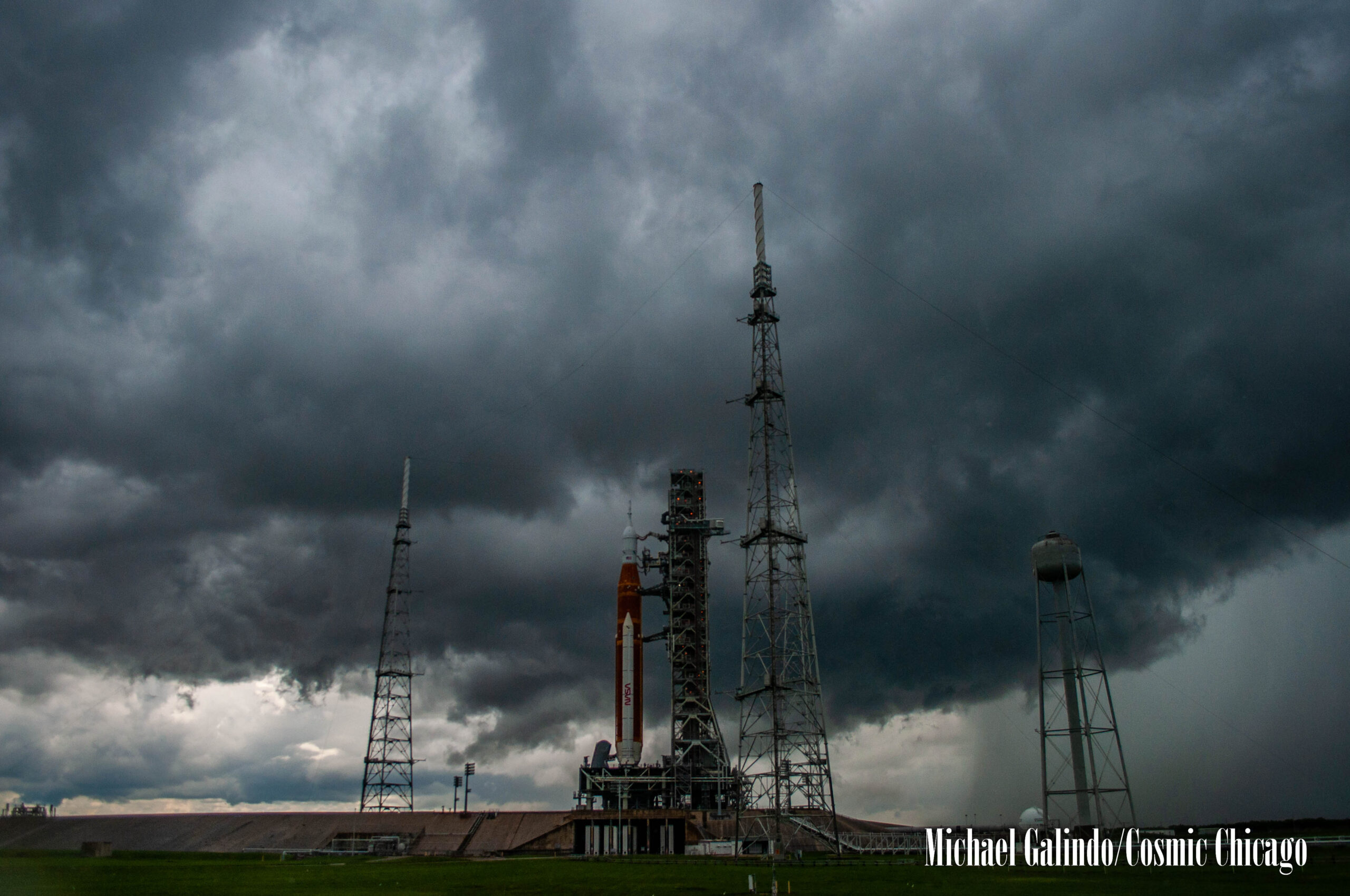At a Friday morning telecon, NASA discussed Wednesday’s cryogenic tanking test results. Mid-test hydrogen (LH2) began leaking from a quick disconnect seal again. Teams then implemented new procedures to manage the flow of LH2 into the rocket.
They began first by stopping the flow of LH2 and allowing the seal to warm up and reseat itself. Then, teams slowly loaded LH2 into the rocket. The teams managed the leak by increasing or decreasing the flow of LH2.

NASA officially declared the test a success Wednesday morning. SLS Chief Engineer also stated that the Space Force Eastern Range granted the permission necessary to proceed with the launch without returning to the VAB to check Flight Termination batteries and service the launch vehicle.
The focus of the briefing then turned to the developing tropical cyclone in the Caribbean, which as of 10 pm CT Friday, officially upgraded to Tropical Storm Ian. According to the 10 pm forecast, Ian will strengthen into a hurricane just before crossing Cuba, potentially making landfall in SW Florida either late Tuesday night or early Wednesday morning.

Hurricane forecasting beyond three days is still problematic, and many things can change. But forecast models are confident that Ian will make a close pass at Florida, bringing torrential rain and tropical storm force winds to Kennedy Space Center. Despite this, NASA officials seemed to maintain a wait-and-see attitude, showing no concern with leaving the SLS at the pad in tropical storm force winds. Officials repeated that the launch vehicle could withstand up to 74 mph sustained winds while at the launch pad.
John Blevins, SLS Chief Engineer, stated, “If we actually experienced a true hurricane, it would be my recommendation that we consider rolling back…Usually, the footprint of those things isn’t as wide, you know, for those high winds.”
While the extremely high winds in some hurricanes only extend a few miles, low-end hurricane and tropical storm force winds can extend for hundreds of miles. Rainbands that produce torrential rainfall and wind gusts up to tropical storm force can extend thousands of miles from a tropical cyclone.
Still, NASA officials did not seem too concerned and will make a final decision Saturday afternoon. Despite the relaxed attitude, NASA has staged the Crawler Transporter near the launch pad just in case the SLS needs to roll back to the VAB.
Cosmic Chicago will continue to monitor the situation as it develops.

